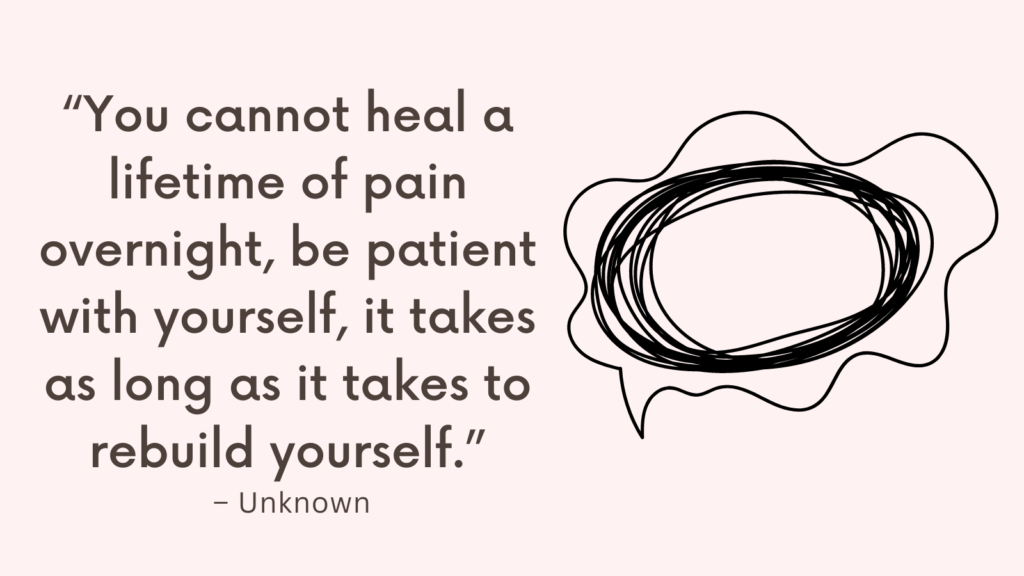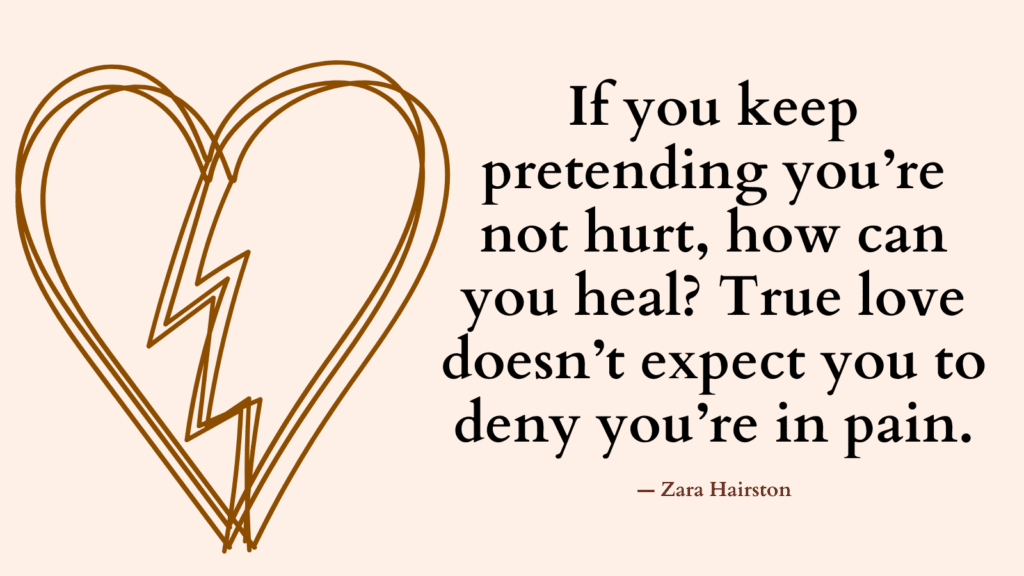In this post, you’re going to find out what happens when the scapegoat fights back.
Who Is the Scapegoat?
The scapegoat is a term used in psychology and sociology to describe an individual who is unfairly blamed, criticized, or stigmatized within a family, social group, or larger community.
This individual often becomes the target of negative projections and serves as a convenient outlet for others to release their frustrations, conflicts, or insecurities.
The scapegoat is typically chosen based on various factors such as personality traits, vulnerability, or perceived differences.
The role of the scapegoat can vary depending on the context.
In a family setting, for example, the scapegoat may be a particular family member who is consistently blamed for problems or conflicts that are not entirely their fault.
In social groups or communities, scapegoating can occur based on factors such as race, religion, gender, or other characteristics that make an individual stand out or become marginalized.
Being a scapegoat can have significant psychological and emotional consequences for the individual involved. They often experience feelings of isolation, low self-esteem, anger, and resentment.
Related: Am I The Scapegoat Child Quiz
Why Do People Engage In Scapegoating?
Scapegoating is often a result of complex social, psychological, and emotional dynamics.
People may engage in scapegoating to deflect attention from their own insecurities, fears, or failures.
It can also serve as a way to maintain group cohesion or to bond through shared negative sentiments towards the scapegoat.
What Happens When the Scapegoat Fights Back?
When someone plays the role of a scapegoat within a family or social group, they are often subject to unjust blame, criticism, and marginalization.
However, there may come a time when the scapegoat decides to assert themselves, fighting back against this unfair treatment.
1. Challenging the Status Quo
When the scapegoat decides to fight back, it disrupts the established dynamic within the family or social group.
By challenging the status quo, the scapegoat sheds light on the toxic patterns and dynamics that have been perpetuated for a significant period.
This can create discomfort and resistance within the group, as those accustomed to the scapegoating may resist any change that threatens their positions or roles.
Related: Am I The Black Sheep Of The Family Quiz
2. Anger and Resistance
As the scapegoat fights back, it is common for the other members of the group to respond with anger and resistance.
They may attempt to invalidate the claims and experiences of the scapegoat, defending their actions and denying any responsibility for the harm caused.
This resistance can intensify the emotional burden placed on the scapegoat, potentially leading to feelings of frustration, sadness, and resentment.
3. Increased Conflict
When the scapegoat asserts themselves, it can lead to increased conflict within the group.
This conflict arises due to the clash between the scapegoat’s pursuit of justice and the resistance from other members who wish to maintain the existing power dynamics.
The increased conflict may further escalate the emotional tension and potentially strain relationships within the group.
Related: Adult Child Syndrome: 3 Steps To Break Family Cycles
4. Potential Shifts in Power
When the scapegoat fights back, it has the potential to bring about shifts in power dynamics.
The previously marginalized individual begins to claim their agency and challenge the established hierarchy.
This shift can be threatening to those who have benefited from the scapegoating, and they may attempt to reassert their dominance or control over the situation.
5. Empowerment and Healing
Despite the challenges and resistance faced, when the scapegoat fights back, there is an opportunity for empowerment and healing.
By asserting themselves, the scapegoat takes a significant step towards reclaiming their self-worth and setting boundaries for their own well-being.
Fighting back can foster personal growth, resilience, and a sense of liberation from the oppressive dynamics previously experienced.
Related: What Is Golden Child Syndrome & How to Overcome It?
Strategies for the Scapegoat to Fight Back
While it can be tempting for someone who feels like a scapegoat to seek revenge or engage in confrontational behaviors, it is important to approach the situation in a manner that preserves your well-being and promotes positive change.
Here are some strategies that may help a scapegoat navigate their circumstances:
1. Self-reflection and boundary setting
Take time to reflect on your own feelings, strengths, and weaknesses.
Understand that you cannot control how others perceive or treat you, but you can establish healthy boundaries to protect yourself from further harm.
Set clear limits on what kind of behavior you will accept from others and communicate these boundaries assertively when necessary.
2. Seek support
Reach out to trusted friends, family members, or professionals who can provide emotional support and guidance.
It can be helpful to confide in those who understand your situation and can offer objective perspectives.
Joining support groups or online communities can also connect you with others who have similar experiences.
Related: Best 10 Books About Abuse
3. Psychological empowerment
Develop a strong sense of self-worth and resilience by engaging in activities that boost self-esteem.
Focus on your strengths, talents, and accomplishments.
Engaging in hobbies, pursuing personal goals, or seeking personal growth through therapy or self-help resources can help you cultivate a positive self-image.
4. Educate yourself about Scapegoating
Understanding the dynamics of scapegoating can provide insight into why it is happening and help you detach emotionally.
Read books, articles, or scientific research on the topic to gain an understanding of the underlying psychological processes at play.
Related: Top 8 Dysfunctional Family Roles
5. Practice assertiveness and effective communication
Learn assertive communication techniques to express your thoughts, feelings, and needs in a respectful and confident manner.
Being able to clearly communicate your boundaries, concerns, or objections can help address the unfair treatment you may be experiencing.
6. Develop coping strategies
Explore coping mechanisms that help you manage stress, anxiety, or other negative emotions associated with being a scapegoat.
This could include engaging in regular exercise, practicing mindfulness or meditation, journaling, etc.
7. Challenge negative beliefs
Scapegoating often leads to distorted thinking patterns, such as overgeneralization (assuming that one negative experience applies to all aspects of your life), personalization (assuming blame for things outside of your control), or emotional reasoning (believing that your emotions reflect reality).
Challenge these negative thoughts by highlighting your positive qualities, achievements, and reminding yourself that you are not defined by others’ opinions or treatment.
Look for evidence that contradicts your negative beliefs. Pay attention to moments when you receive positive feedback or recognition from others, when you succeed in accomplishing tasks, or when you receive support and validation from trusted individuals in your life.
Related: Negative Core Beliefs List (& 8 Tips On How To Challenge Them)
8. Focus on personal growth and resilience
Transform the experience of being a scapegoat into an opportunity for personal growth.
Seek out self-improvement activities, engage in personal development programs, or take up new hobbies that foster resilience and empower you to rise above the situation.
9. Engage in self-care
Prioritize self-care activities that promote relaxation, self-nurturing, and emotional well-being.
This could include taking breaks, engaging in activities you enjoy, practicing good sleep habits, maintaining a balanced diet, and seeking professional help when needed.
10. Practice self-compassion
Treat yourself with kindness and understanding.
Acknowledge that being a scapegoat is not your fault, and that you deserve compassion and care.
Counteract negative self-talk with self-compassionate statements, such as “I am worthy of love and respect” or “I am not defined by the opinions of others.”
Each individual’s journey and circumstances are unique, so it’s essential to find strategies that suit you best.
While it may not be possible to completely eradicate scapegoating behaviors from others, developing resilience, self-compassion, and inner strength can empower you to navigate these challenging dynamics with greater confidence and well-being.
Related: How To Be Gentle With Yourself? Top 5 Ways To Practice Self-Compassion

Conclusion
When the scapegoat fights back, it disrupts the existing dynamic within a family or social group.
While this may lead to increased conflict and resistance, there is also an opportunity for empowerment, healing, and personal growth.
By seeking support, practicing self-care, setting boundaries, and developing assertiveness skills, the scapegoat can navigate this challenging journey while prioritizing their well-being and reclaiming their agency.



